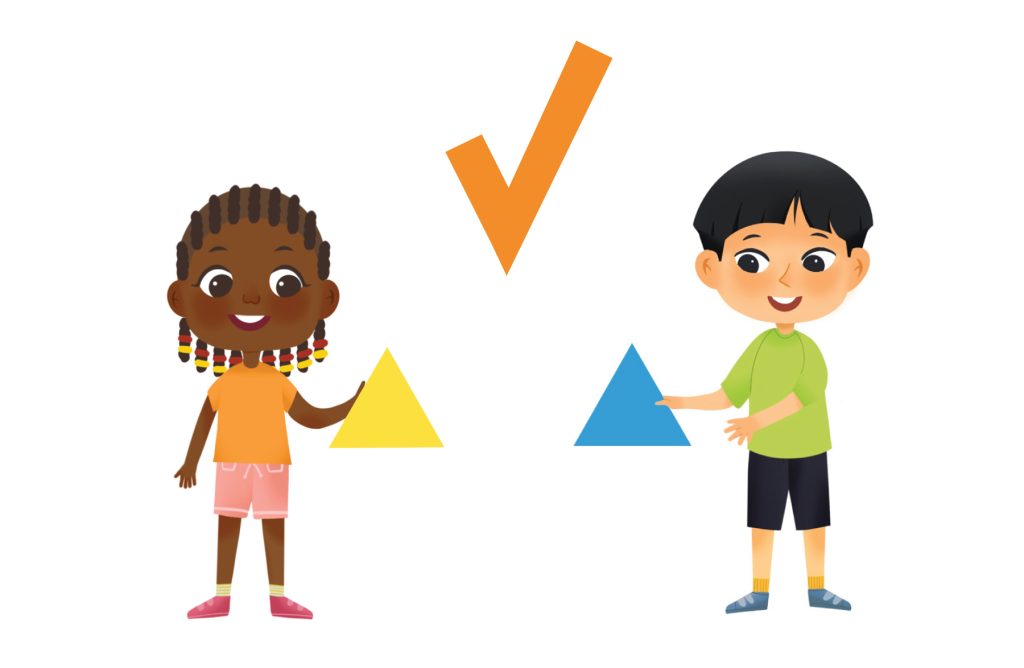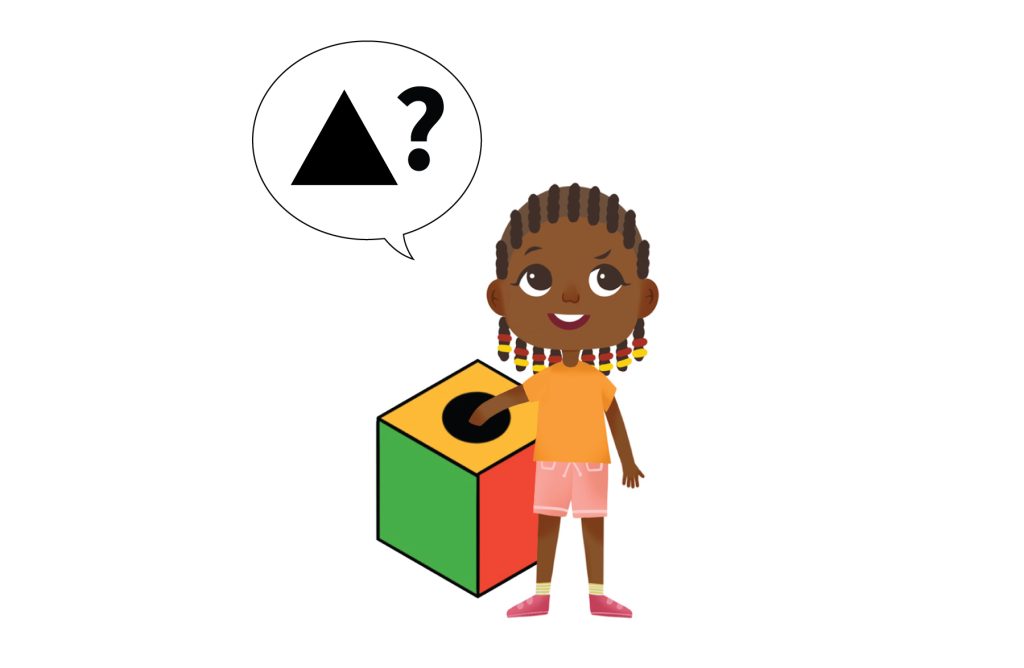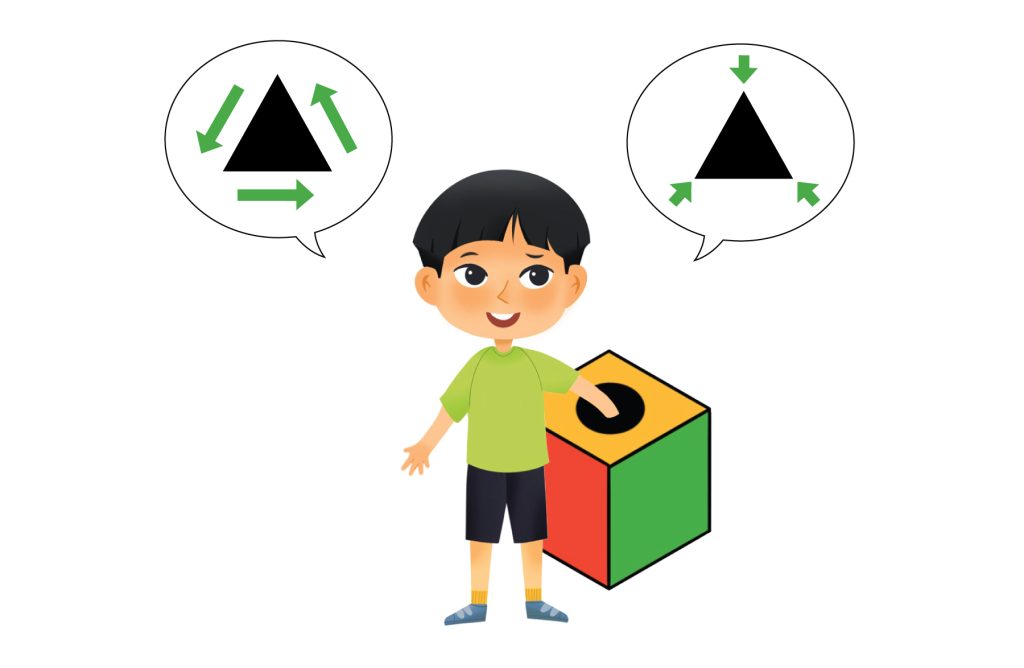There are 3 versions of What Shape Am I Touching?.
Become familiar with all of them so you can easily move between versions to adapt to children’s shape knowledge skills.
Matching Shapes
This version of What Shape Am I Touching? is suitable for children who are just starting to learn about shapes.
Primary Objective
- Matching familiar shapes (for example, circle, square, typical triangle, rectangle) to a target shape
- Matching less familiar shapes (for example, hexagon, rhombus, trapezoid, atypical triangle)

Naming Shapes
This version of What Shape Am I Touching? is suitable for children who can match most shapes to a target shape and are learning to recognize and name shapes.
Primary Objective
- Recognizing and naming familiar shapes (for example, circle, square, typical triangle, rectangle) and less familiar shapes (for example, hexagon, rhombus, trapezoid) of different sizes and orientations
- Recognizing sides and angles (vertices) as distinct geometric features
- Counting shapes’ sides and angles based on their shape family (for example, all triangles have three sides and three angles)

Describing Shapes
This version of What Shape Am I Touching? is suitable for children who can identify most shapes correctly and are learning to describe defining features (for example, sides, angles) of shape families (for example, triangle vs. rectangle).
Primary Objective
- Using essential, defining features to name and describe shapes (for example, triangles have three straight sides and three angles)
- Understanding shape properties, or the relationship between parts of shapes (for example, squares have four side of equal lengths)
